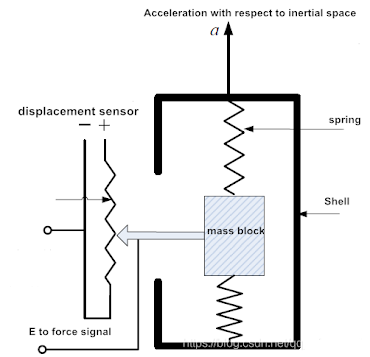How to use IMU (inertial measurement unit )in pipeline 3D attitude measuring ?
Inertial navigation is an inertial measurement unit (IMU) composed of a gyroscope and an acceleration sensor to measure angular velocity and acceleration information of the carrier.Based on the inertial measurement principle, the pipeline attitude measuring instrument introduced in this paper measures its own three-axis attitude Angle or angular velocity, current acceleration, etc., and analyzes and calculates these attitude quantities, so as to obtain the three-dimensional attitude of the pipeline.
.Let's take a look a measuring instrument based on inertial measurement sensor technology -- pipeline three-dimensional attitude measuring instrument.
As a common instrument for measuring the precise attitude (trajectory) of underground pipelines, the pipeline attitude measuring instrument is a kind of three-dimensional precise attitude measuring instrument based on MEMS inertial measurement unit.This kind of product has internal integration of inertial guided measurement unit, lithium battery, DSP and mass storage unit, which can complete the collection without external auxiliary equipment. It adopts all-metal sealing structure and adaptive shrinkage guide device, which can adapt to the traction and travel of various inner diameter pipelines. It is shockproof and always keeps the measuring unit on the center line of the pipeline.It is mainly applied to the completion measurement of pipe jacking construction in trenchless industries of underground pipelines such as electric power, gas and water.
In the process of use, the pipeline attitude measuring instrument can measure its own three-axis attitude Angle or angular velocity, current acceleration and travel distance through the inertial measurement sensor device. These attitude values are analyzed and calculated by the integral algorithm, so as to obtain the three-dimensional attitude of the pipeline.In complex urban environment, this kind of instrument can accurately measure the three-dimensional data of underground pipeline, which is especially suitable for the measurement and positioning of pipeline completion.
At present, the existing pipe network and well chamber detection technology includes ground detection and underground detection. Ground detection is mainly carried out by radar, infrared ray and ultrasonic methods for line finding and flaw detection.Although the detection is conducted directly on the surface, the detection efficiency is low and the detection accuracy cannot be guaranteed. At the same time, there are certain requirements for the technical level of the detection personnel and the cost of the detection equipment is also relatively expensive.Underground detection technology consists of laser radar, closed-circuit television, downhole robot: although laser radar theory can more accurate detection of pipe network, but to the well chamber test is difficult, expensive equipment at the same time, inconvenience, for operating and testing personnel requirements are high, the result is not intuitive, practicality is not high.
For trenchless pipeline of accurate location information in pipeline construction, the scientific use of underground space, the maximum to avoid the line cut, eliminate the potential accidents, by adopting pipeline three-dimensional attitude measuring instrument, to the trenchless pipeline in pipeline construction to carry on the accurate measurement and positioning, so as to solve the above other detection means can't solve the practical problems.
It should be noted that, in practical application, because the pipeline 3D attitude measuring instrument is based on the principle of accurately measuring its own motion trajectory and obtaining the central coordinate sequence of the measured pipeline, its measurement accuracy is not only limited by the built-in core inertial sensor measurement unit, but also closely related to the structural stability of the instrument during operation.Therefore, keeping the structure of the measuring pipe stable is also one of the prerequisites for accurate data measurement by the 3D attitude measuring instrument .

















.jpg)
